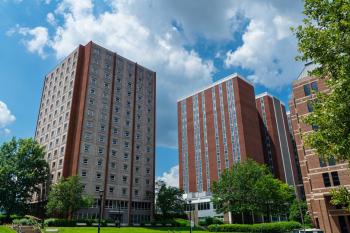Breaking Down Barriers: Why Community College Transfer Should Be Easier

Breaking Down Barriers: Why Community College Transfer Should Be Easier
What if the path from community college to a four-year university was seamless? Why do so many students face unnecessary roadblocks when trying to transfer? How can we simplify this process to make higher education more accessible? These questions lie at the heart of a growing debate about equity in education. Transferring from a community college to a university should be straightforward, yet many students encounter bureaucratic hurdles that derail their academic journeys.
The Current State of Community College Transfers
The transfer process from community colleges to four-year institutions is often fraught with complications. Many students find that their hard-earned credits don't transfer, forcing them to retake courses and prolong their education. This not only increases financial burdens but also discourages students from pursuing bachelor's degrees altogether.
A real-world example is California's system, where despite articulation agreements between community colleges and universities, students still lose an average of 13 credits during transfer. This translates to nearly a full semester of wasted time and money. The problem isn't limited to California—it's a nationwide issue affecting thousands of ambitious learners.

Financial and Psychological Impacts
The financial consequences of inefficient transfer systems are staggering. Students who lose credits often pay thousands more in tuition to retake equivalent courses. This disproportionately affects low-income students, many of whom choose community colleges specifically for their affordability.
Psychologically, the transfer process can be demoralizing. Imagine working diligently for two years, only to be told your efforts don't fully count. This experience leads many students to question whether higher education is worth the struggle, contributing to the disturbingly high dropout rates among transfer students.
Consider Maria, a first-generation college student in Texas who had to abandon her nursing aspirations after discovering none of her science credits would transfer to the state university. Stories like hers are far too common.

Systemic Barriers in Higher Education
Several systemic issues create these transfer obstacles. First, there's often poor communication between institutions about course equivalencies. Second, university requirements frequently change without corresponding updates to transfer agreements. Third, many universities prioritize native students over transfers in competitive programs.
A practical example is the engineering program at a Midwestern university that accepts transfers, but only if they've completed specific courses offered at just one community college in the state. Such restrictive policies essentially create educational monopolies and limit student choice.

Successful Models Worth Replicating
Not all news is bleak. Some states have implemented effective transfer systems that could serve as national models. Florida's '2+2' program guarantees admission to state universities for community college graduates, with all credits transferring. Similarly, Arizona's universal course numbering system ensures seamless credit transfers across public institutions.
These programs demonstrate that with political will and institutional cooperation, transfer barriers can be eliminated. The results speak for themselves: Florida's community college transfer students graduate from universities at higher rates than native students.

Policy Solutions and Advocacy
Several policy changes could dramatically improve transfer processes. Standardizing general education requirements across institutions would be a major step forward. Creating statewide (or ideally nationwide) course equivalency databases would provide transparency. Legislating credit acceptance mandates would force universities to honor community college coursework.
Advocacy groups like the Campaign for College Opportunity are pushing for these reforms. Their work in California has already led to improved transfer pathways, showing that organized efforts can create meaningful change.

The Path Forward
Simplifying community college transfers isn't just about convenience—it's about educational justice. In an era where bachelor's degrees increasingly determine economic mobility, we cannot tolerate systems that disproportionately hinder low-income and minority students.
The solutions exist. What's needed now is the collective will to implement them. By removing these artificial barriers, we can create a more equitable higher education system that truly serves all students.






